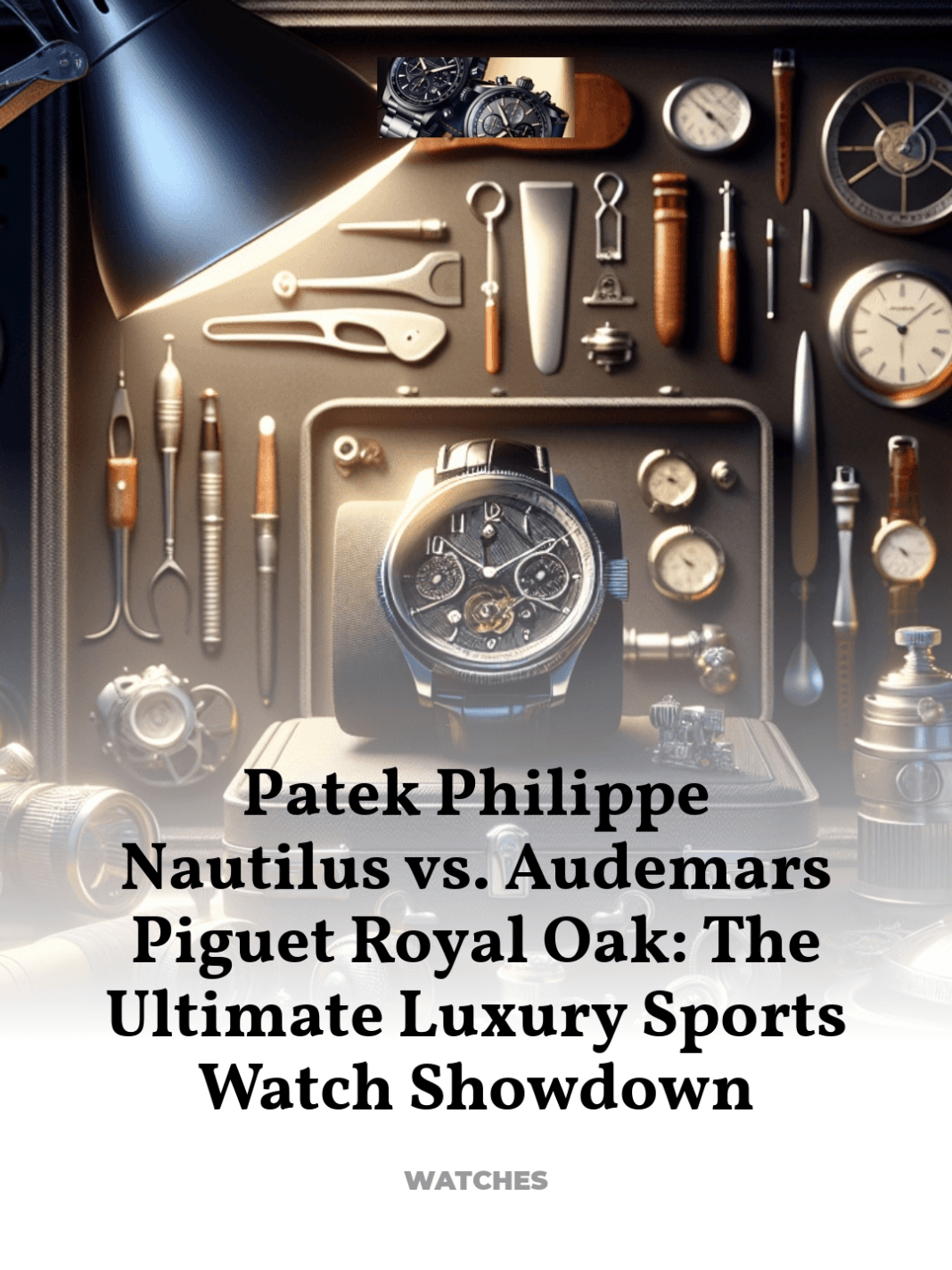Which of these Gerald Genta-designed masterpieces reigns supreme?
Two titans of the luxury watch world, Patek Philippe Nautilus and Audemars Piguet Royal Oak, stand as monumental achievements in watchmaking. Crafted by the legendary designer Gerald Genta, these timepieces are not just tools for measuring time but are profound statements of aesthetic beauty, technical innovation, and cultural prestige.
- Design and Evolution: A Tale of Two Icons
- Craftsmanship and Materials: The Art Behind the Artistry
- Cultural Impact: Symbols of Status Across Generations
- Collectibility and Artistic Value: Beyond Mere Ownership
- Which Reigns Supreme? A Connoisseur’s Perspective
Design and Evolution: A Tale of Two Icons
The stories of the Patek Philippe Nautilus and Audemars Piguet Royal Oak begin with their shared designer, Gerald Genta. Renowned for his revolutionary approach, Genta imbued both models with a distinctive blend of robust functionality and undeniable elegance, setting new benchmarks in the luxury sports watch category.
The Audemars Piguet Royal Oak debuted in 1972, challenging traditional watch aesthetics with its octagonal bezel secured by visible screws, and an integrated bracelet that flows seamlessly from the case. This design not only marked a new chapter in watchmaking but also saved Audemars Piguet from financial difficulties, cementing its status in watchmaking history.
In contrast, the Patek Philippe Nautilus, introduced in 1976, was initially met with skepticism due to its unusual, porthole-shaped case and comparatively large size for the time. However, its blend of luxury finishes and sporty design gradually won admiration, becoming one of the most sought-after watches in the world.
Both watches have evolved while staying true to their original visions. The Royal Oak has expanded into a full range of models including chronographs, perpetual calendars, and tourbillons. Similarly, the Nautilus line has grown to include various complications, such as moon phases and annual calendars, enhancing its appeal while maintaining its distinctive aesthetic.
Craftsmanship and Materials: The Art Behind the Artistry
The construction of both the Nautilus and Royal Oak reflects a mastery of watchmaking that few can rival. Each model showcases the pinnacle of case crafting, intricate dial design, and meticulous assembly, performed by some of the world’s most skilled artisans.
The Royal Oak’s case is famously complex to manufacture. Its angular, many-faceted design requires precision machining and finishing that can only be achieved through hand-crafting. The iconic “Tapisserie” pattern of the dial, originally created using a rare, 19th-century guilloché machine, is a signature feature that demands the utmost precision.
The Nautilus, on the other hand, is known for its sleek, understated elegance. Its case is characterized by a subtle, rounded octagonal shape with a horizontally embossed dial that catches light with a unique shimmer. This effect is achieved through a meticulous dial-making process that remains a closely guarded secret, adding to the allure of the Nautilus.
Both watches utilize high-grade materials such as 18k gold, platinum, and proprietary steels that ensure not only aesthetic beauty but also functional integrity and durability. These choices reflect the brands’ commitments to excellence and longevity, key aspects that attract collectors and enthusiasts worldwide.
Cultural Impact: Symbols of Status Across Generations
The Royal Oak and Nautilus have transcended their material existence to become cultural icons. Celebrities, business moguls, and watch connoisseurs flaunt these timepieces as symbols of status and taste, which in turn shapes public perception and desire.
The Royal Oak has been sported by a diverse array of personalities, from musicians to athletes to royalty, reflecting its broad appeal across different cultures and generations. Its appearance in movies and on red carpets has cemented its status as a symbol of rugged elegance.
Similarly, the Nautilus has been a favorite among the elite for its understated luxury and impeccable craftsmanship. Its association with exclusivity and wealth makes it a frequent feature in high-profile events and among influential figures in the arts, finance, and technology sectors.
Collectibility and Artistic Value: Beyond Mere Ownership
Collectors of luxury watches value the Nautilus and Royal Oak not just for their aesthetic appeal or as functional timepieces but for their investment potential and historical significance. Each model release is often met with anticipation and excitement, leading to long waiting lists and premium resale values.
The limited production numbers, coupled with high demand, have driven the secondary market prices to multiple times their original retail price, particularly for vintage models or those with rare complications. This market behavior highlights the enduring allure and value retention of these watches, making them favorites among collectors.
Which Reigns Supreme? A Connoisseur’s Perspective
Choosing between the Patek Philippe Nautilus and the Audemars Piguet Royal Oak is not merely a matter of comparing features or aesthetics; it is more about personal preference and what the watch signifies to the individual. Both watches offer exceptional craftsmanship, iconic design, and a rich heritage.
For those who value pioneering design and a slightly more robust feel, the Royal Oak may be the preferred choice. Its unmistakable presence and historical significance as a savior of its brand add to its appeal. Conversely, for enthusiasts who lean towards sleek elegance and subtler luxury, the Nautilus offers a compelling choice with its smooth contours and understated sophistication.
Ultimately, both the Nautilus and the Royal Oak are not just timepieces but pieces of history. Owning either is a testament to one’s appreciation of fine watchmaking and a nod to the legacy of Gerald Genta, whose genius continues to influence the luxury watch industry decades after his designs first appeared.
For further exploration of these iconic watches, esteemed sources such as the Patek Philippe Museum and Audemars Piguet’s own historical archives offer in-depth insights and detailed histories of these remarkable timepieces.



